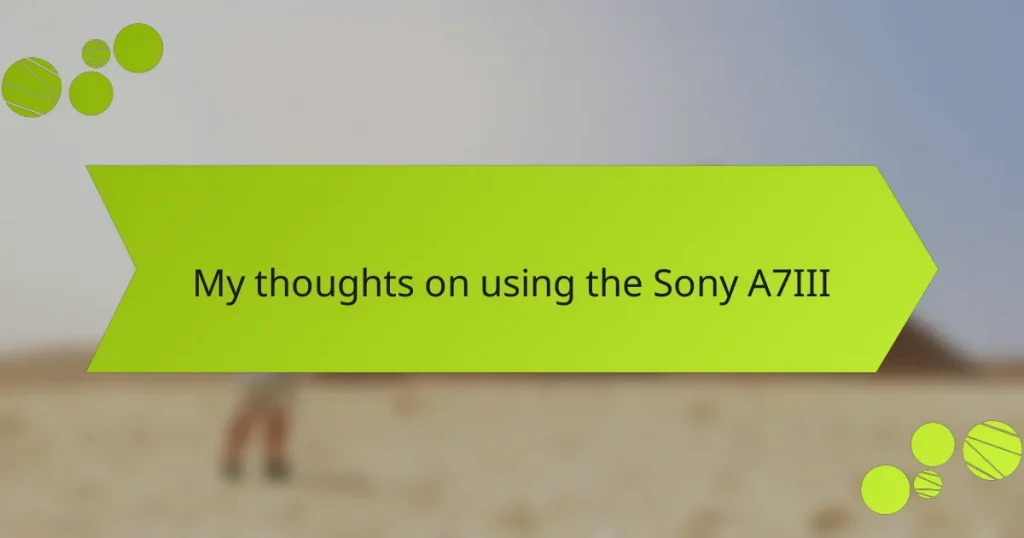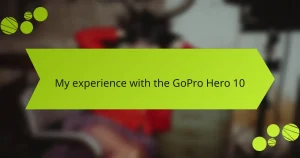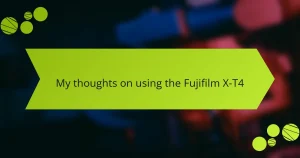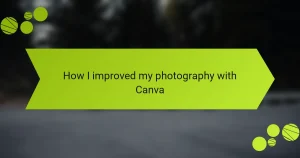Key takeaways
- The Sony A7III features a 24.2 MP full-frame sensor that excels in low-light conditions and delivers impressive image quality.
- Its fast autofocus system with 693 phase detection points enhances portrait photography, capturing fleeting moments effortlessly.
- The camera’s continuous shooting speed of 10 fps and 4K video capability make it versatile for capturing action and videos without quality compromise.
- While the A7III offers excellent battery life, its bulkiness and complex menu system present minor challenges for users.
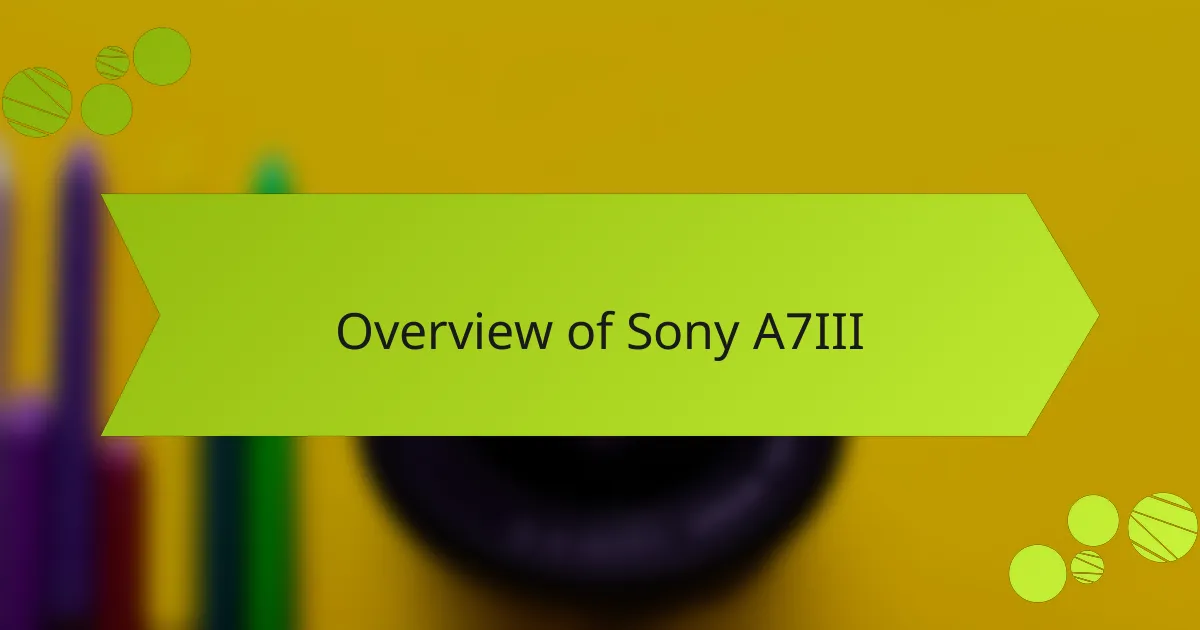
Overview of Sony A7III
The Sony A7III is a versatile mirrorless camera that quickly became a favorite among both amateurs and professionals. With its impressive 24.2-megapixel full-frame sensor, this camera delivers stunning image quality in various lighting conditions. When I first picked it up, I was amazed at how comfortable it felt in my hands, and the intuitive layout made navigating through settings a breeze.
What truly excites me about the A7III is its fast autofocus system, particularly the Real-time Eye autofocus feature, which has drastically improved my portrait photography. I vividly remember capturing a fleeting moment at a friend’s wedding where the A7III locked focus on the bride’s eyes instantly, allowing me to preserve that special emotion beautifully.
| Feature | Details |
|---|---|
| Sensor | 24.2 MP Full-Frame |
| ISO Range | 100-51,200 (expandable to 50-204,800) |
| Autofocus Points | 693 Phase Detection, 425 Contrast Detection |
| Continuous Shooting Speed | 10 fps |
| Video Recording | 4K at 30fps |
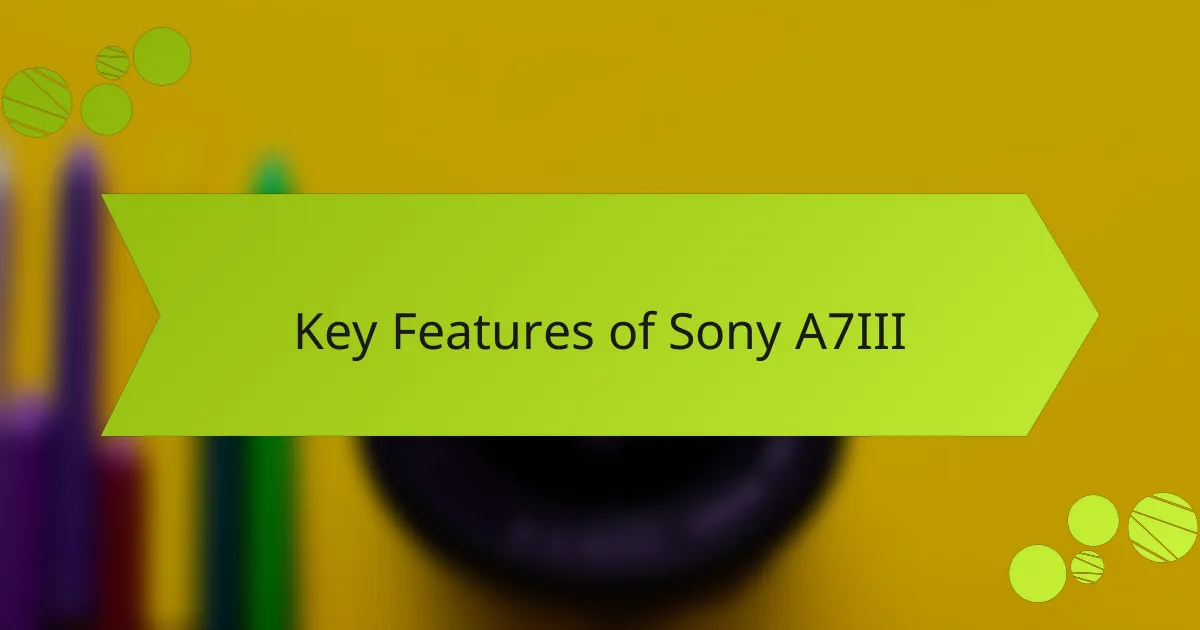
Key Features of Sony A7III
The Sony A7III boasts a remarkable 24.2 MP full-frame sensor, which I’ve found to be a game-changer for capturing images with incredible detail and clarity. I recall a sunset photo I took on a recent trip; the colors popped in a way that I hadn’t fully experienced before, and the shadow details were astonishing. With a broad ISO range of 100-51,200, it really handles low-light situations with grace—something I struggle with on other cameras.
Another standout feature is the rapid autofocus system, with 693 phase detection points and 425 contrast detection points. When I was trying to photograph my daughter’s dance recital, the A7III’s ability to focus quickly on her movements while she was spinning was a relief. Have you ever missed a perfect shot because your camera just couldn’t keep up? That’s a worry of the past with this model.
Lastly, the continuous shooting speed of 10 frames per second is something I personally appreciate during action-packed moments, like at sports events. It’s almost like running alongside the players; I felt immersed in the action as I captured every key moment in real-time. The ability to shoot 4K video at 30 fps adds another layer of versatility, making it easy to transition from stills to video without compromising quality. I often use this feature when creating family videos, and the results never fail to impress.
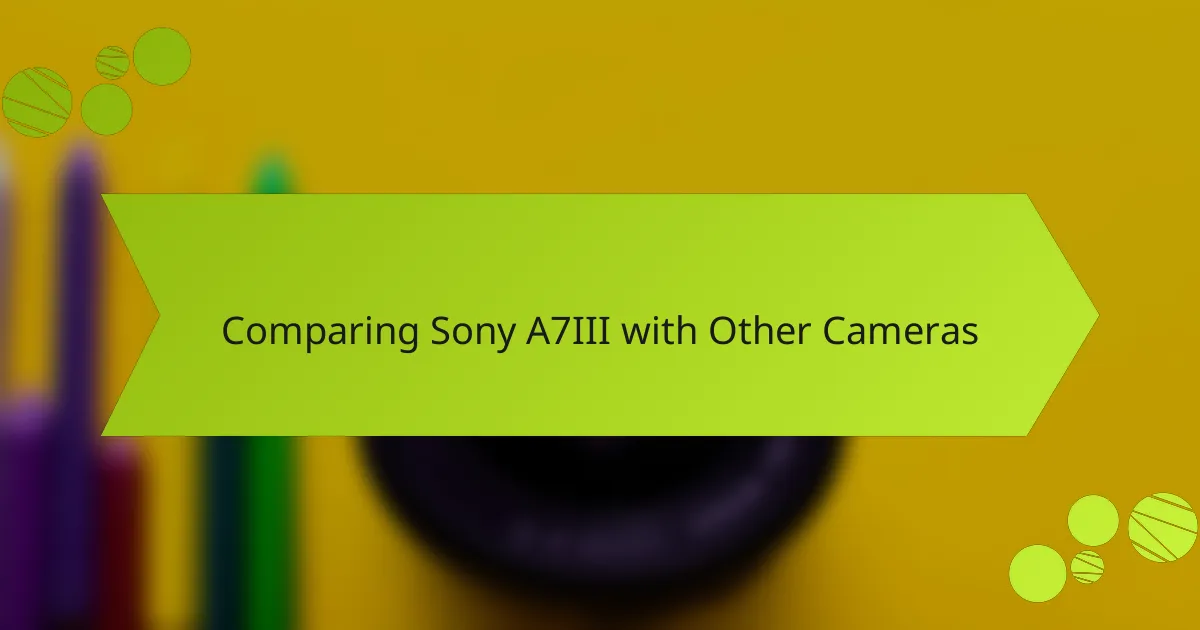
Comparing Sony A7III with Other Cameras
When comparing the Sony A7III to other cameras, I often focus on its versatility and performance. For instance, the A7III has impressive low-light capabilities, which make it a go-to for many of my nighttime shoots. In my experience, while other cameras in its class, such as the Canon EOS R or Nikon Z6, have their strengths, the A7III strikes a remarkable balance between quality, speed, and accessibility.
The battery life of the A7III is another attribute worth mentioning. I appreciate how I can shoot for hours without worrying about changing batteries frequently—something that has certainly saved me during long events. In contrast, I’ve found that many competitors fall short in this area, which can be frustrating when you’re in the moment and need reliability.
Here’s a comparison table to highlight some key features of the Sony A7III alongside a couple of its competitors:
| Feature | Sony A7III | Canon EOS R | Nikon Z6 |
|---|---|---|---|
| Sensor | 24.2 MP Full-Frame | 30.3 MP Full-Frame | 24.5 MP Full-Frame |
| ISO Range | 100-51200 | 100-40000 | 100-51200 |
| Battery Life (CIPA) | 710 shots | 370 shots | 310 shots |
| Video Capability | 4K up to 30fps | 4K up to 30fps | 4K up to 30fps |
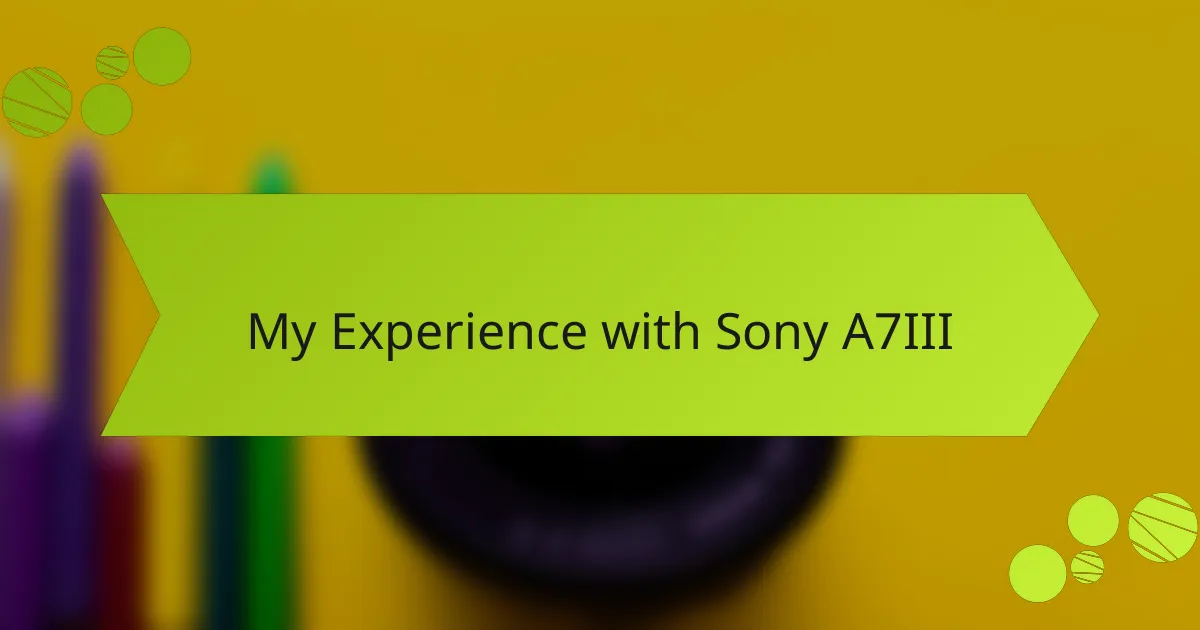
My Experience with Sony A7III
My experience with the Sony A7III has been incredibly rewarding. The camera’s full-frame sensor delivers outstanding image quality, and I’ve often found myself amazed by the dynamic range it offers. I remember my first shoot during sunset, capturing vibrant colors that I never thought possible; it felt like I was witnessing a masterpiece unfold right in front of my eyes.
One feature that stands out to me is its autofocus system. The eye autofocus is a game changer for portrait photography. I was photographing a friend’s wedding, and I was relieved to find that I could lock onto her eyes in a crowded, fast-paced environment effortlessly. It gave me confidence to capture those candid moments without worrying about focus.
Here’s a comparison table that outlines key features and aspects of the Sony A7III:
| Feature | Details |
|---|---|
| Sensor | 24.2 MP Full-Frame Exmor R |
| Autofocus | 693 Phase-Detection & 425 Contrast Detection Points |
| ISO Range | 100-51200 (expanded to 50-204800) |
| Continuous Shooting Speed | 10 fps with AF/AE tracking |
| Battery Life | 650 shots (CIPA) |
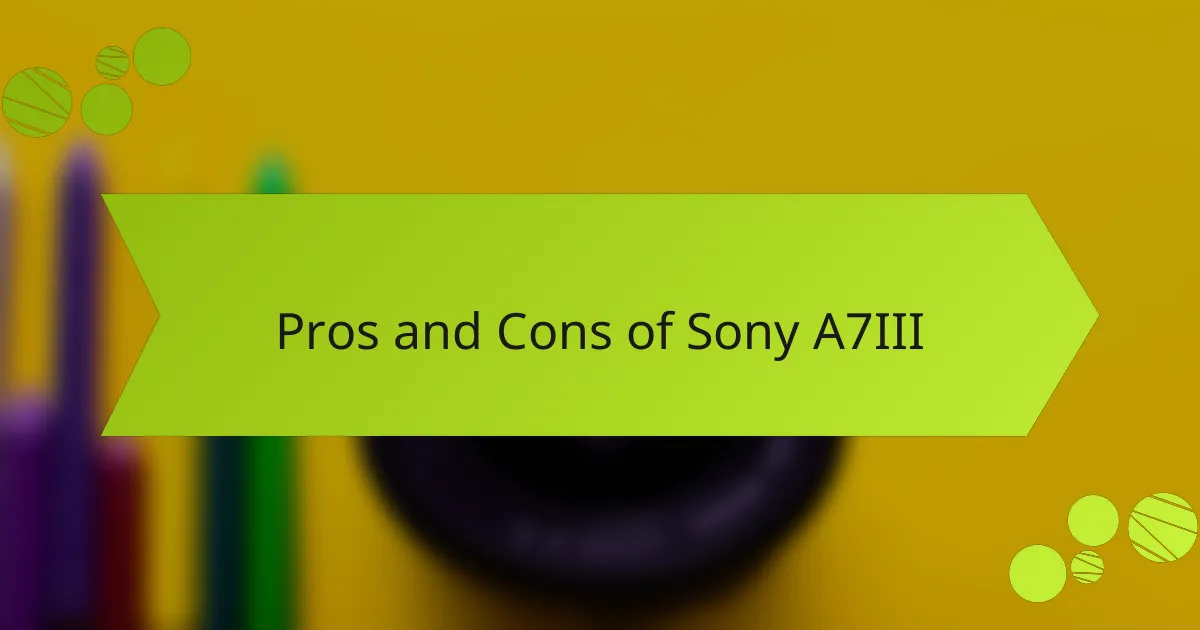
Pros and Cons of Sony A7III
The Sony A7III has several standout advantages that enhance the shooting experience. One of the most notable is its remarkable low-light performance; I remember a late-night event where I captured some beautiful images without any flash. The rich detail and reduced noise in those shots truly amazed me. Have you ever been frustrated by poor lighting during a crucial moment? With the A7III, that’s a worry of the past.
However, it’s essential to consider some downsides as well. For one, the camera can feel a bit bulkier compared to some other mirrorless options on the market. I’ve often found myself wishing for a more compact design, especially when I’m traveling. Additionally, while the battery life is generally good, during extensive shooting sessions, it’s still prudent to carry an extra battery. Have you ever regretted not being fully prepared? I certainly have!
On the technology side, the A7III’s menu system can initially be overwhelming. I remember the first time I dove into the settings and felt lost among all the options. With time and practice, I got accustomed to it, but there’s a learning curve involved. Has learning a new camera ever felt like climbing a mountain for you? It can be daunting, yet the rewards are well worth the effort as you unlock the full potential of this amazing camera.

Tips for Using Sony A7III
When it comes to using the Sony A7III, one of my top tips is to get comfortable with its autofocus settings. The Real-time Eye autofocus is outstanding, but its performance can be significantly enhanced by setting the right focus mode for your environment. I remember struggling to nail down focus during a bustling outdoor event; once I switched to a dedicated setting, it was like a lightbulb turned on—I started catching those candid moments effortlessly.
Experimenting with the camera’s customizable buttons has also transformed my shooting experience. The ability to assign functions to different buttons means I can access frequently used settings with just a click instead of digging through menus. I recall a shoot where I quickly adjusted to lower the ISO after noticing some motion blur in a dim light—having that control at my fingertips made a world of difference.
Lastly, don’t underestimate the power of shooting in RAW format. This setting preserves more image data, giving you greater flexibility in post-processing. I’ve had evenings where I thought a shot was ruined due to harsh lighting, only to be pleasantly surprised when I pulled up the RAW file and made adjustments. Have you ever salvaged what you thought was a lost photo? It’s exhilarating to see those hidden details come to life!
